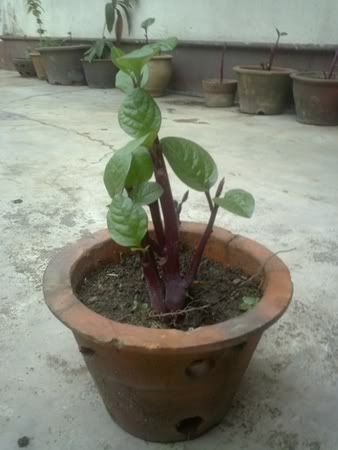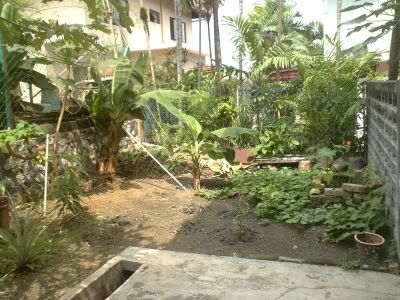Sometime back, I had tried my hands at growing my own vegetables, but most of them except Malabar spinach (or Ceylon spinach) were attacked by pests. I was reluctant to use chemicals so I feeble attempt at home-grown vegetables was mainly aborted. Perhaps there is a solution.
According to
CETDEM, pest infestation is not a problem but a symptom of i
mbalance. When symptoms appear, one should find out what causes it and remove the disturbing factors (Preventive measures). One can also carry out physical, biological and botanical controls (Control measures).
What are the disturbing factors? They include an imbalanced Agro-Ecosystem (caused by monoculture) and an imbalanced Soil Ecosystem (caused by a lack of organic matter, continuous cropping, use of agricultural chemicals which kill micro-organism). The solution will be, of course , to create a balanced agro-ecosystem and a balanced soild ecosystem
Balanced Agro-EcosystemThe most important role is diversity and the methods include
- diverse cropping to increase the diversity of the population of predactors
- inter-cropping, including scattered planting of insect repellent and medicinal plants like basil, marigolds, ginseng, mint, serai citronella.
- planting perennial trees to attract insect-eating birds
- non-use of agrochemicals
Balanced Soil Ecosystem- Methods to create and maintain a balanced soil ecosystem include
- crop rotation
- regular supply of organic matter like mulch, green manure, compost
- avoid mixing raw organic matter with the soil
- non-use of agrochemicals
Physical Controls- Hand-picking done by catching the insects and other predactors like snails and removing them
- Light trap done by putting a light above a container of water so that the insects are attracted to the light and fall into the water
- Net cover. Covering the crops with a net to protect them from insect attack.
Biological Control- Attracting birds (by planting trees) that eat the insects
Natural Pesticides - ash
- tobacco dust or leaves
- neem leaves and seeds
- chilli
- pounded garlic
To control aphids, one can make a spray by soaking 250 gm of tobacco, 30 gm of soap flakes in 4 litres of water over 2 nights, sieve, then dilute with 1 part filtrate with 4 parts water.
Using pesticides, however, is not recommended by
CETDEM.
Source:
Organic Farming Publications(
CETDEM Organic Farming Project).
Note: Organic Farming courses and training are conducted by CETDEM. For more information, go to
Courses and Training
 Bought more malabar spinach from the wet market this morning, cut off the big leaves for soup tonight, planted the cuttings along the fence. Posting it for the record here so that I can see how long it will be before I get my first harvest. Then found a little leftover cutting. Decided to do a little experiment. I put it in a glass of water to see if left like this, the cutting will grow roots. If so, I will replant it in the garden later. Just for fun.
Bought more malabar spinach from the wet market this morning, cut off the big leaves for soup tonight, planted the cuttings along the fence. Posting it for the record here so that I can see how long it will be before I get my first harvest. Then found a little leftover cutting. Decided to do a little experiment. I put it in a glass of water to see if left like this, the cutting will grow roots. If so, I will replant it in the garden later. Just for fun.


